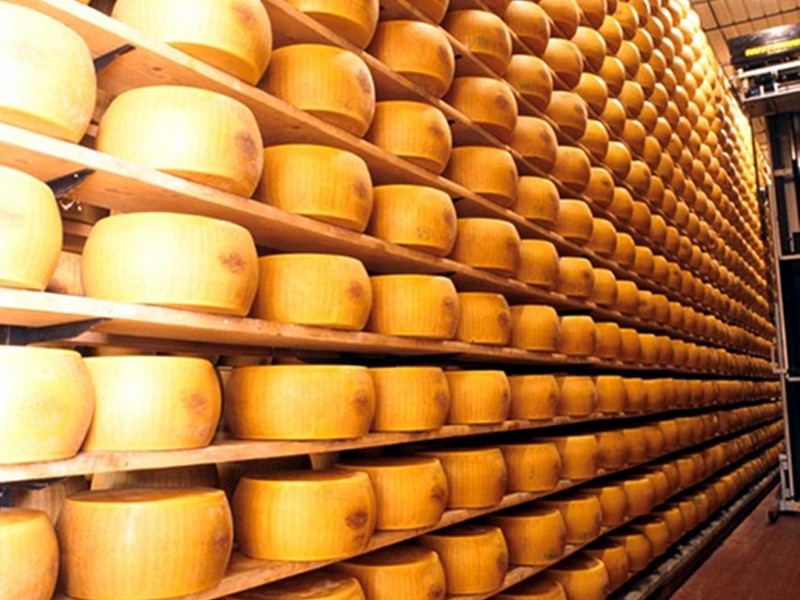The most famous cheese in Italy and in the world is produced at the foot of Appennino Reggiano and Parmense, and well represents the landscape where meadows, alfalfa pastures, and forests alternate.
Parmigiano Reggiano has a long history which probably began in the monasteries and aristocratic estates: as a matter of fact, only the large estates could provide the necessary quantity of milk to produce one single round of cheese (which is obtained today with about 500 liters), considering the fact that a cow in the Middle Ages produced about 3 liters of milk per day. The production of a cow's milk "formadio" in the Apennines of Emilia is witnessed since the 13th century; it is also mentioned by Boccaccio, Teofilo Folengo, and Burchiello.
Parmigiano was still recently processed in the so-called "caselli", curious octagonal or hexagonal buildings with no windows but with walls made with a brickwork grating enabling the circulation of air. In the middle of the one and only premise, an upside-down bell-shaped copper boiler gathered the milk which was heated with wood-burning fire.
Today, the producers have adjusted to the rules of the health boards, but the bells, or "caldere", are not very different from the traditional ones: in steel with an interior copper covering, they contain about 10 quintals of milk, which gets partly skimmed in special basins (the evening milking). In each "caldera", two rounds of Parmigiano Reggiano are produced.
Traditional ingredients are used: raw milk, rennet (which is a natural enzyme), and salt; the production specifications do not allow any kind of additive. And, according to the tradition, the so-called "whey grafting" is practiced: a small percentage of whey obtained from the processing of the day before is added to the milk contained in the boiler. In this way, the enzymes giving the cheese its particular organoleptic features are handed down "from round to round", from generation to generation.
However, the path the cheese must follow to reach our table is longer. The curd, pressed in the metal cheese molds, is salted in brine for about 20 days, and then left maturing in special premises for a period going from one to three years.
Today, the specifications regarding the designation of origin limit the production area in the Provinces of Parma, Reggio, Modena, Bologna (left bank of the river Reno), and Mantova (right bank of the river Po). As a matter of fact, the quality of Parmigiano Reggiano depends on a series of factors linked to the production techniques, but above all to the environment. And the Parmigiano Reggiano of the Apennines is a cut above: it was born in an environmental context with a low human impact and where the climate, drier and less warm, is better than in the plain. Moreover, the quality of the fodder is higher for the greater variety of vegetal species growing in the mountain stable meadows; also the milk produced is better, because the mountain cows are less productive, but their milk is richer in proteins and fats. It is not possible to understand the landscape of the Apennines without visiting one of the local cheese factories or social dairies: it will be an occasion to understand how this cheese is made and to directly purchase mountain Parmigiano Reggiano, without forgetting butter and ricotta cheese, which are its natural corollary.











